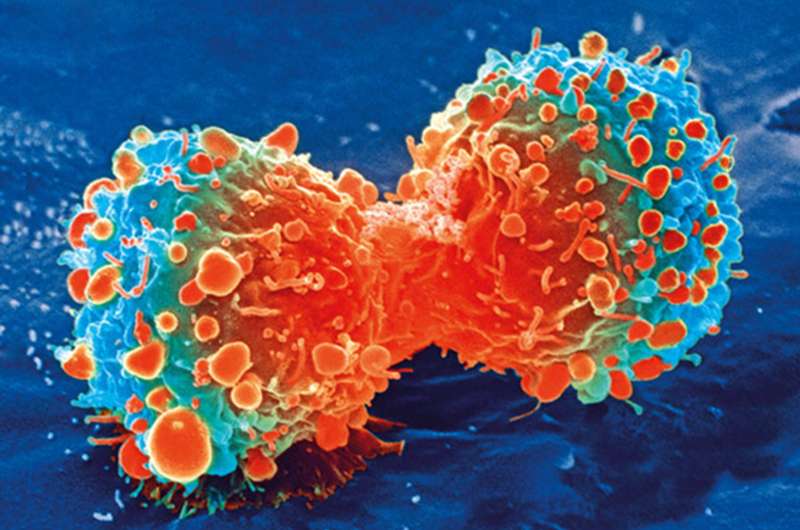Researchers find a new mechanism by which cells can sense oxygen with applications in cancer treatment

Researchers from the University of Oulu and Harvard University have found a previously unknown mechanism by which cells in the body sense oxygen. Lack of oxygen had a direct influence on the functioning of genes, and prevents cell differentiation. The study could open up new opportunities for the development of cancer drugs. It was published in Science.
At the heart of the finding are enzymes called histone demethylases, whose task is to regulate the structure of chromatin, i.e. DNA and the attached proteins. The researchers demonstrated that the lack of oxygen prevents certain histone demethylases from working, as a result of which cells are unable to differentiate.
This new finding is relevant in the development of novel cancer drugs. Cancer cells are typically undifferentiated, and chromatin abnormalities have been found in many cancers.
"Oxygen levels are often low in tumour tissues because of their rapid growth and inadequate vascularity, and, in addition, histone demethylases in many cancer cells are either mutated or missing altogether," says MD, Ph.D. Tuomas Laukka, who studied the subject in his doctoral dissertation.
It has been known that the lack of oxygen stops the differentiation of cells. Stem cells are an example of undifferentiated cells typically located in the most oxygen-poor niches of the human body. Now, the researchers have demonstrated a direct link between oxygen content, histone demethylase activity, gene function and cell differentiation.
"For the first time, we showed that the amount of oxygen has a direct effect on histone demethylase activity. This effect was previously believed to be indirect," Professor Peppi Karppinen from the University of Oulu says.
According to Karppinen, this finding will shape perceptions of how the body senses oxygen. Through evolution, animals have developed an oxygen sensing method with a protein named HIF at the centre. It is activated when the blood oxygen level drops. However, this system does not exist in plants. Instead, they have histone demethylases. It is possible that histone demethylases are an earlier method of oxygen sensing in living organisms, preceding the HIF proteins.
Next, the researchers intend to take a closer look at why some histone demethylases are more dependent on oxygen than others.
Karppinen, who uses the name Koivunen in scientific articles, and her research team have conducted pioneering research into oxygen sensors in the body and pharmaceutical development for almost 20 years.
More information: Abhishek A. Chakraborty et al. Histone demethylase KDM6A directly senses oxygen to control chromatin and cell fate, Science (2019). DOI: 10.1126/science.aaw1026




















